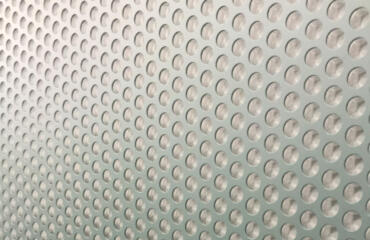‘Much of how we want to live is based on things we see in the media – not just on things we’ve experienced ourselves.
I studied depictions of communities in film and television for my PhD. For example, a dream of living in New York one day would be based on seeing films and TV shows set in New York. In the nineties, popular sitcoms such as “Friends” and “Seinfeld” were selling that apartment lifestyle.
No one knows how to spin a dream better than Hollywood, so it’s interesting to look at their depiction of place. I work as an urban planner and have a keen interest in film. So I investigated the intersection between the two.
‘Television shows such as the 1950s series “Leave it to Beaver” depict communities tied together by their civic institutions such as the church, the courthouse and the bank. But in the 90s there were cinematic backlashes against that ideal, such as “The Truman Show”.’
There’s a movement in urban planning called New Urbanism that began in the 1990s. It started because cities seemed to be overcrowded.
As a response it suggests we return to pre-World War II ideas of design. In doing so, planners would build little towns and get back to old-fashioned idyllic suburban imagery. You can see examples of it in “It’s a Wonderful Life” and “Leave it to Beaver”.
My research looked at the extent to which the New Urbanists draw from media imagery of these 40s and 50s suburban examples. I am very sympathetic to the New Urbanists overall, even though I wouldn’t describe myself as one.

The PhD was an opportunity to unpick key questions while pursuing some of my main interests. How does urban planners’ physical place-making connect with filmmakers’ imaginative place-making? How do film and TV shape our mental images and understanding of broad categories of places such as “big city”, “small towns” or “suburbs”?
Television shows such as the 1950s series “Leave it to Beaver” depict communities tied together by their civic institutions such as the church, the courthouse and the bank. But in the 90s there were cinematic backlashes against that ideal, such as “The Truman Show”.
It’s important to look at how some of these later examples have coloured our understanding of older media depictions of place. Urban planners need to think about this.
It’s a massive blind spot planners have. If you look at places after World War II they’re not as well-designed as they were beforehand. These cultural depictions of older communities are now our best record of them.
Film and television record aspects of community that have become lost. Most people today have dispersed lives. We eat, work, shop and even sleep in different places.
It might be the result of seeing so many films like “The Truman Show” mock close–knit communities. Those films are all about people imprisoned in this artificial old–fashioned world.
Many films are about a character who breaks out of the “evil”, oppressive planned environment. I wrestled with New Urbanist criticisms claiming 40s and 50s-style towns are “fake”.
‘Planners should be talking about whether space is good or bad instead. They should ask themselves, “Is it a better design than it could be?” ’
It’s a very pejorative perspective. It’s saying that the towns are superficially nice but they’re not real. But in that sense, all places proposed by planners are fake. They’re designed. They’re not organic.
Planners have interfered and “made” them. As a response, I’d say “real” and “fake” are poor design criteria. Planners should be talking about whether space is good or bad instead. They should ask themselves, “Is it a better design than it could be?”
That’s where cinema and planning come together. The sites are made for film and media. But they’re not just movie sets – they’re physical towns you can walk through.
I visited the key New Urbanist town of Seaside in Florida. That’s where they filmed The Truman Show. I also went to Disneyland.
When you walk into Disneyland you go through Main Street, USA. It was a community created by a media company. They’re filmmakers by trade but they developed Main Street as a path everyday people could actually walk on – as opposed to watching it on TV.
‘People often mention things such as the soap opera “Neighbours” as the Australian version of this idealised suburban lifestyle.’
I analysed these media spaces as physical place. I chose America because I’ve lived there a bit and I’ve found the culture is so uninformed by what happens elsewhere. Here we get cultural examples from around the world.
But the US is really self-reflexive. People often mention things such as the soap opera “Neighbours” as the Australian version of this idealised suburban lifestyle.
But in the US, you get extreme themed environments creating an artificial sense of place. I found hyper-planned communities such as Seaside are more useful for New Urbanism applications. There’s nothing quite as crazy here.’
Stephen Rowley’s thesis is titled: “Picture Perfect: Hollywood’s Ideal Communities and the Perils of Dream-Building.”
*My PhD is an irregular series in which The Citizen speaks with recent Melbourne University PhD graduates.

